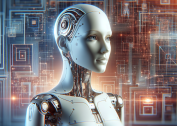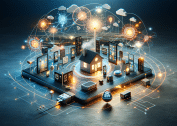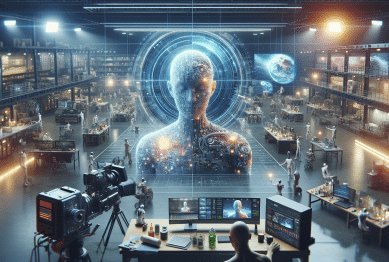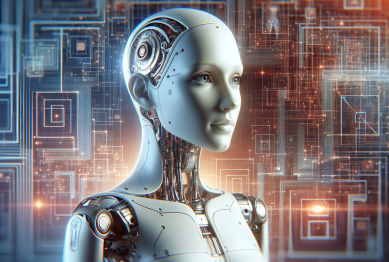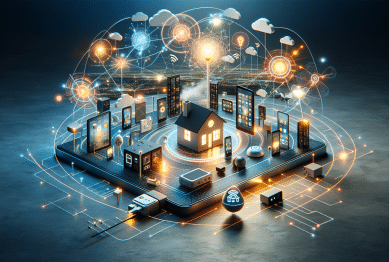In today’s world, the intersection of technology and environmental conservation is creating new opportunities to protect our planet more effectively. Advances in artificial intelligence (AI), the Internet of Things (IoT), and data analytics are transforming how we monitor ecosystems, manage resources, and reduce human impact on the environment. This article explores some of the most exciting trends in this field and how they are shaping the future of sustainability.

How Technology and Environmental Conservation Work Together
Technology and environmental conservation are increasingly intertwined. Innovative tools are helping researchers and conservationists collect better data, analyze patterns, and make more informed decisions to preserve natural habitats.
Key areas where technology supports environmental conservation include:
- AI-driven ecological monitoring: AI algorithms analyze large datasets from satellites and sensors to track wildlife populations and detect environmental changes.
- IoT-enabled real-time sensing: Networked sensors provide up-to-date information on soil quality, air pollution, water levels, and climate conditions.
- Smart agriculture: Technology optimizes farming techniques to use water, fertilizers, and pesticides more efficiently, reducing ecological damage.
By leveraging these tools, we gain insights that were previously impossible, enabling targeted and effective conservation efforts.
Emerging Trends at the Intersection of Technology and Environmental Conservation
AI-Powered Wildlife and Habitat Monitoring
Artificial intelligence is revolutionizing the way we monitor wildlife and ecosystems. Using machine learning, AI can identify species from images or sounds collected by remote cameras and sensors. This improves biodiversity tracking without disturbing animals in their natural environment.
For example, AI-powered image recognition has helped researchers in Africa monitor endangered species more efficiently, providing crucial data for conservation strategies.
IoT Sensors for Real-Time Environmental Data
The Internet of Things enables constant environmental monitoring through sensors placed in forests, oceans, and urban areas. These devices measure temperature, humidity, pollution levels, and other critical parameters, sending data to centralized platforms for analysis.
Such real-time monitoring helps detect environmental threats early, such as illegal logging, water contamination, or wildfire risks. For instance, IoT networks in California have improved wildfire detection times by 30%, allowing faster emergency responses.
Smart Agriculture Promoting Sustainability
Agriculture is one of the largest contributors to environmental degradation, but technology offers sustainable solutions. Precision farming uses sensors and AI to optimize irrigation, fertilizer use, and crop management, reducing waste and runoff.
Collaborations between universities and tech firms are advancing smart agriculture, helping farmers increase yields while lowering their ecological footprint.
Challenges and Considerations
While the intersection of technology and environmental conservation holds great promise, it also comes with challenges:
- Energy consumption: Data centers powering AI and IoT can consume significant energy, sometimes from non-renewable sources.
- Data privacy and ownership: Collecting large environmental datasets raises questions about who owns the data and how it’s used.
- Technology access: Remote or underdeveloped regions may lack the infrastructure needed to implement advanced conservation technologies.
Addressing these challenges requires careful planning and policies that promote sustainable, equitable use of technology.
How Individuals Can Support Technological Conservation Efforts
Even outside of professional circles, individuals can engage with the intersection of technology and environmental conservation:
- Support organizations that develop or use green tech for conservation.
- Adopt smart home devices that reduce energy and water consumption.
- Participate in citizen science projects that use apps and platforms to gather environmental data.
- Advocate for policies encouraging sustainable technology deployment.
These small actions contribute to a broader culture of responsible tech use for the environment.
Conclusion: The Future of Technology and Environmental Conservation
The intersection of technology and environmental conservation is driving a shift towards smarter, data-driven sustainability efforts. AI, IoT, and precision agriculture are just a few examples of how innovations are enabling us to better understand and protect the planet.
To maximize benefits, stakeholders must balance technological advancement with environmental responsibility, ensuring that new tools support long-term ecological health. As these trends develop, they offer hope for a future where technology and nature thrive together.
References
-
US Forest Service. (2023) IoT fire monitoring systems increase wildfire detection speed. Washington, DC: United States Department of Agriculture.
-
World Economic Forum. (2022) Artificial intelligence and conservation: how technology is saving biodiversity. Geneva: World Economic Forum.



